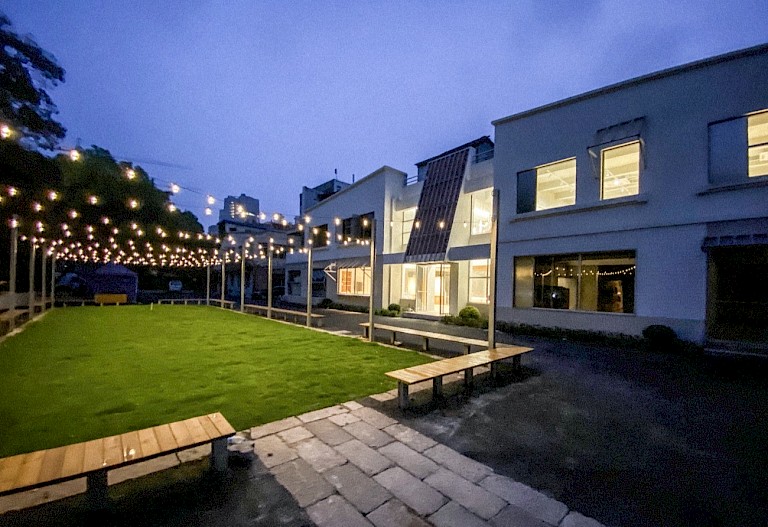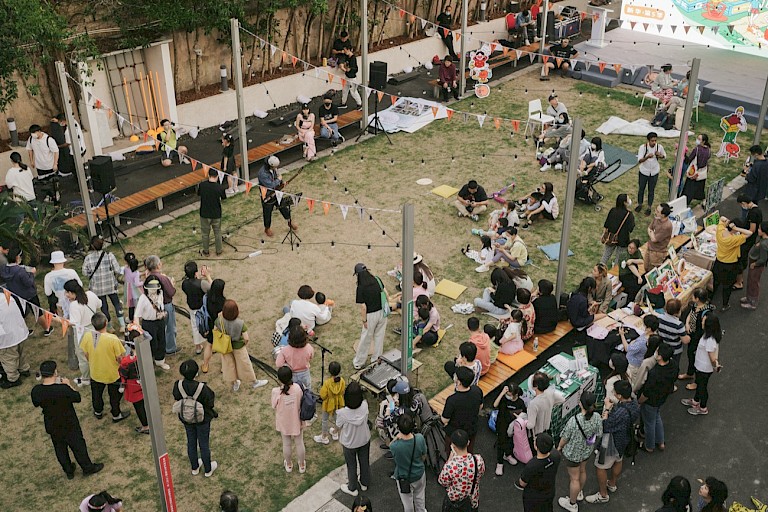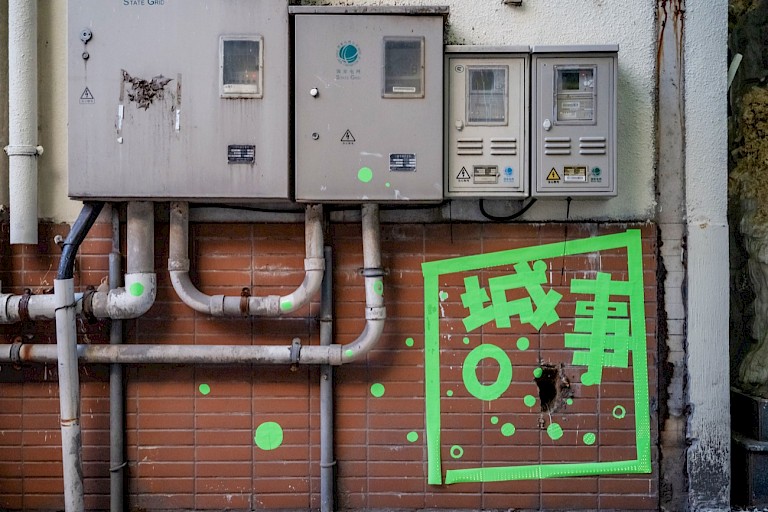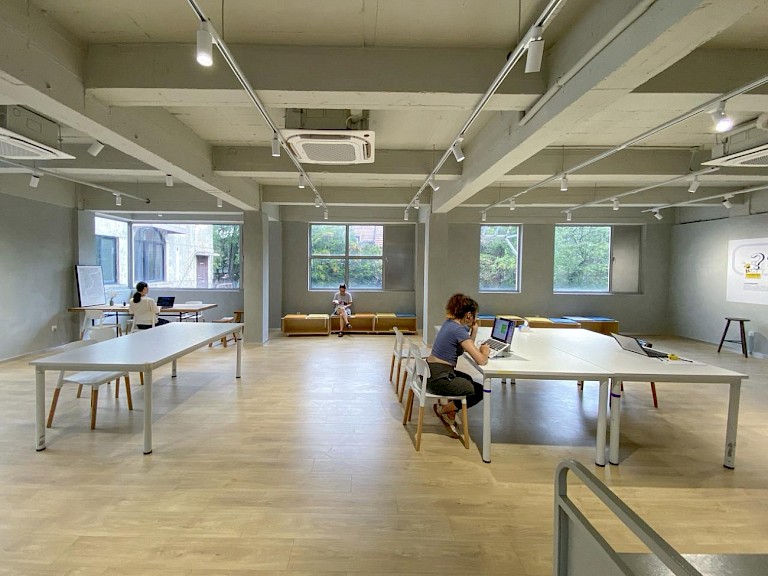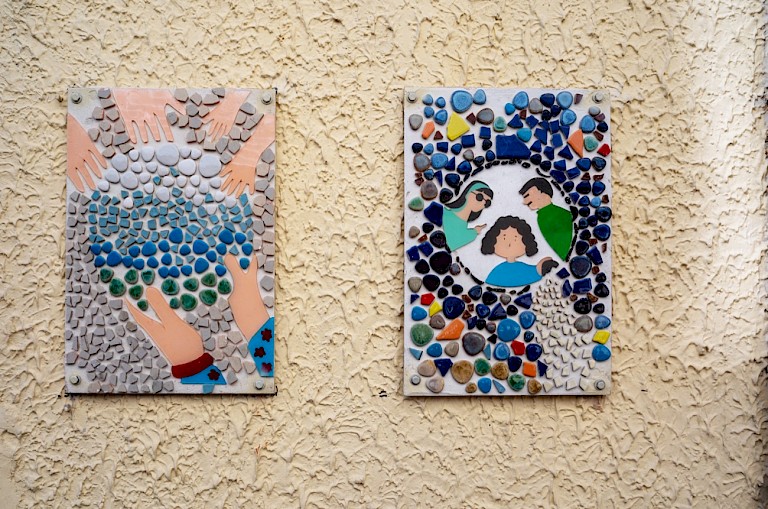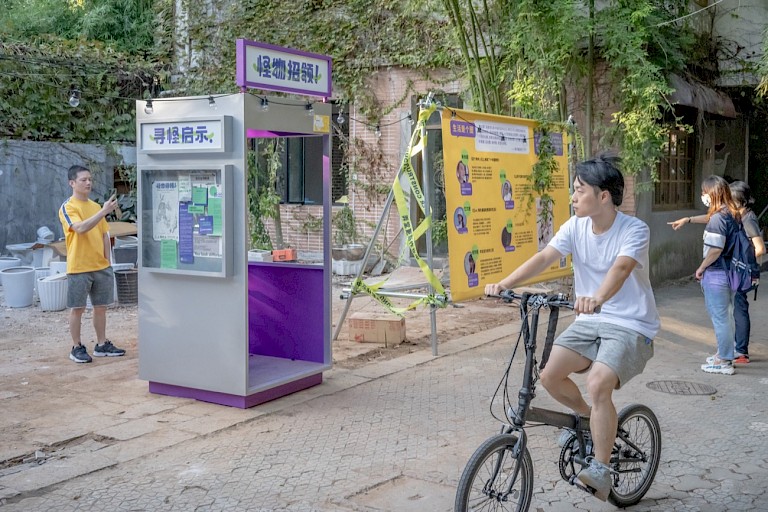



phase of the transformation encountered many challenges. For one thing, the complexity of the project itself, and for another, the impact of the epidemic had a huge impact on operational preparations, fundraising, and construction, as well as the uncertainty in moving forward. The project team decided not to wait until everything was finalized and fully funded, and the renovation was completed, but decided to take a gradual approach to promotion and testing: resuming participatory interactions with the community while continuing to carry out small-scale hardware renovations focused on simplicity and environmental protection, and opening up for partnership recruitment and trial operation. The entire process has made it possible to expand the impact of the Center for Community Building, which first, involves community participation throughout, second, continues to be open to connecting resources and exploring collaborations, and third, learns from the experience of iterating on the pilot operation.In July 2022, when the renovation of the Xinhua Community Building Center reached 70%, a "Community Open Day" was held, inviting community members to participate in flash mobs, research and work, and to think about the possibility of resilient recovery of the community after the outbreak, inspiring great enthusiasm of the community, and injected confidence and motivation into the project's relaunch. In August 2022, the Xinhua Center for Community Building was 80% complete, and its internal functional modules were initially clear. The project team released the "Community Building Center Master Plan" and started the trial operation. The plan invites community partners to participate in the center's operational experiments, using the space to initiate various types of actions, and transforming the action tests into future content modules. In September 2022, Xinhua Center for Community Building was officially opened and the fifth "Xinhua Better Community Festival" was held. The festival of Better Communities is an annual branding event on Xinhua Road subdistrict connecting local communities, friendly merchants, and community leaders, and celebrating the achievements of community building with a grassroots arts festival. The Good Community Festival has become a well-established tradition in Xinhua, with each edition combines a community issue choosing the corresponding venue, and activating the possibilities of venue use with festivals and events. The activities include community bazaar, cultural performances, sharing sessions with activists, exhibitions of local original works, project launches and other formsThe Support System for "Everyone's Participation in Creating a Better Community" as a new type of community public space, Xinhua Center for Community Building is positioned as a "support center" for the community, providing support for shaping a "Everyone's Participation in Creating a Better Community" and serving as a hub for the "Carrier of the Support System". Xinhua Community Building Center has built four major support systems: firstly, establish a "local ecosystem". The community social network superimposed on the spatial network of the 15-minute community living area, with local resources and external resources, such as professional forces, universities, foundations and support platforms. Community members can not only feel the "Xinhua Living Area", but also connect to the local community, discover community activists, creators and collaborators; and build a digital community yellow page based on the web3 digital badge system mini program Comupage. Secondly, establish a "Participatory Planning Position". In September 2022, the Shanghai Civil Affairs Bureau issued the Guidelines for Participatory Community Planning, and took Xinhua Community Building Center as a position for participatory planning practice. It builds a professional participatory workshop activity space, collects and presents a series of toolkits for participatory planning and design, community action support, and continuously carries out activities in conjunction with real projects. At the same time, it continues to accumulate issues from various groups of people in the community, forming a library of community proposals, and thus forming a two-way interactive interface between the top and the bottom. Thirdly, establish a "socio-cultural co-learning system". Xinhua Community Building Center not only stimulates the active participation of community members, but also supports professionals and followers from outside the community to be able to form action incubation driven by co-learning through independent learning, project-based learning, and resident practice. At the same time, it empowers community design/community building professionals through the development of a systematic community building curriculum. Fourthly, establish a "sustainable pool of funds". The Xinhua Community Building Center supports sustainable and regular endogenous community actions with a virtuous operation and a multi-channel fundraising model, and forms a supportive pool of funds. Multi-channel revenue includes revenue from space operation and site services, revenue from government procurement of community service projects, fundraising revenue from specialized cooperation with foundations, and revenue from branded community cooperation, etc. It also establishes support programs for community activists and specialized cooperation with foundations.
"Since 2018, the Big Fish Building Team has been working deeply in Xinhua Road neighborhood, through participatory work methods, organizing open days and open research, driving residents to consult and deliberate in community action, promoting a series of community participation, endogenous stimulation of the community, and incubation of innovative actions, forming a set of sustainable community creation mechanisms of co-construction, co-governance, and sharing by multiple subjects, and establishing a good interactive cycle of top-down and bottom-up community development.In addition, community building is closely linked to social innovation. It is also regarded as a direction of social innovation. The community building action of Big Fish Building maintains a dynamic, continuous and open stance, attracting actors of various social innovation issues to work with Xinhua Community. For example, the ""One Square Meter Action"" allows community members to take the initiative in identifying public issues in the community in a small-scale and light-involvement way, and then team up with professional supporters to create a joint project to promote the implementation of the issues under the tenets of ""friendliness, sustainability, and creativity"". It can also incubate local parent-child communities to form self-operation, and facilitate the formation of a supportive pool of funds and experts with street project funds, foundation fundraising platforms, social organizations, and issue experts. Different from the conventional community project model of ""top-down promotion and bottom-up response"", One Square Meter Action adopts the path of ""bottom-up initiation and top-down support"" to stimulate more diversified, reach more people and creative proposals. For example, through the construction of the ""345 Social Innovation Lab"", providing the community with an infrastructure that is ""small, flexible, changeable, open, easy to assemble, easy to reach, easy to display and easy to restore"", and supporting community members, especially young people, to explore together. The lab is a joint venture between the youth entrepreneurial brand ""Setting up Field"" and ""Idle Co-operative"". ""Setting the scene"" designed a set of editable, modular scene furniture system, like the Lego base plate, pre-buried in the ground a number of ""interfaces"", pre-fabrication of different nodes, rods, plug-ins. It is easy for everyone to get up and running, giving the space the flexibility to be transformed into a showroom, bazaar, launch party or workshop in a matter of hours. With 100% recycling of all components after dismantling, the space is restored to its most initial frame state, and virtually no more waste is generated.The overall community building action of Xinhua Road Subdistrict is an open, dynamic, continuous and systematic process. Top-down policy leadership, planning and coordination, project promotion, the key leadership and stage setting of the government, as well as the ""soft environment"" from the bottom-up of the community's endogenous community active participation, common benefit and collaboration, co-creation of homes, and the improvement of the social governance system of ""building, ruling and sharing"" play an active role in community building. The role of the government, enterprises, foundations, social organizations, local alliances, communities, as well as universities and experts are all critical.
The community building process carried out by Big Fish Building in the community of Lane 345 Xinhua Road is also a process of rediscovering community problems, redefining community issues, connecting various parties to propose solutions, mobilizing resources to promote change, and sharing results to maintain the community, so as to form a better relationship of mutual trust and reciprocity, and to reach deeper issues. In the process, each community members' subjectivity and capacity grows, ultimately forming a co-beneficial and symbiotic community ecological participatory design toolkit and empowerment activity. By exploring the ""co-benefit mechanism"" to form a rich community ecology of multiple subjects, with Xinhua Community Building Center as the carrier, continuously exploring the framework and mechanism of multi-subject co-construction, its operational experience will provide very valuable experience for community building and social governance."
